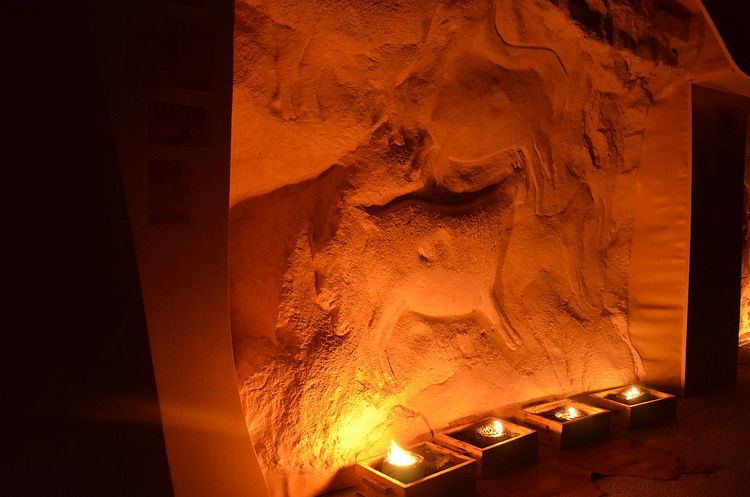Alternate name Sorcerers' Rock | Excavation dates 1933 Phone +33 5 49 83 37 27 | |
 | ||
Hours Closed today MondayClosedTuesday10–10:15AMWednesdayClosedThursdayClosedFridayClosedSaturdayClosedSundayClosedSuggest an edit Similar Cap Blanc rock shelter, Abrigo del Pez, Les Combarelles, Pair‑non‑Pair, Grotte de Bernifal | ||
Roc aux sorciers
Roc-aux-Sorciers is an Upper Paleolithic rock shelter site dating to the mid-Magdalenian cultural stage, ca 14,000 yBP, made famous by its relief wall carvings. The site is in the French commune of Angles-sur-l'Anglin, in Vienne. The name 'Sorcerers' Rock', with its suggestions of pagan rendez-vous, was applied to the site long before the wall-carvings were discovered.
Contents
- Roc aux sorciers
- Le roc aux sorciers d angles sur l anglin
- Excavation history
- The sculpted frieze of the Abri Bourdois
- References
The south-facing rock-shelter at the base of the slopes of the Douce, above the right bank of the Anglin, about 1.5 km (0.93 mi) above the village, is composed of two geologically distinct sections; below is the Abri Bourdois, a classic rock-shelter site beneath a slight overhang, and above is the Cave Taillebourg, a deeper vestibule. The two parts are separated by a zone that has not yet been excavated, kept in reserve. The site was classed a Monument Historique, 18 January 1955.
Le roc aux sorciers d angles sur l anglin
Excavation history
The history of discoveries at Roc-aux-Sorciers begins in 1927, when Lucien Rousseau discovered the Paleolithic habitation and identified it as mid-Magdalenian in its culture. He began excavations in the Cave Taillebourg and recovered an engraved stone in which Henri Breuil detected the representation of a mammoth. Some years later, Suzanne de Saint-Mathurin became aware of Rousseau's article and decided to explore further, hoping to find some incised plaquettes like those from the cave at Lussac-les-Châteaux, also in Vienne. Assisted by her friend Dorothy Garrod, she carried out a decade of intensive campaigns between 1947 and 1957, and followed more sporadically until 1964. The team discovered carved blocks with sculpted and incised figures, sometimes painted, of bison, horses, wild goats, felines and the figure of a man. It soon became clear that these fragments had fallen from the roof of the Cave Taillebourg. Only the carved and painted figure of a bison (illustration, right above) has remained in place.
The sculpted frieze was discovered from 1950. It is composed of bison, horses, wild goats, felines, and the headless and footless figures of women, of the type conventionally called Venuses.
The sculpted frieze of the Abri Bourdois
The sculpted frieze is exceptional for the evidence it offers of the technical mastery of Magdalenian sculptors, for the anatomical details and the impression of power given to volumes in the play of firelight. Both animal and human figures strive for realism, a rarity in paleolithic art that reinforces the unique value of the site.
The excavations brought to light the evidence of human occupation associated with this wall art, of a material culture represented in jewelry, lamps, and tools in flint, in bone and horn and in ivory. The frieze, some twenty metres in length, is an impressively monumental work of art. Numerous finely engraved figures show that graphic values could be expressed on an intimate scale as well.
